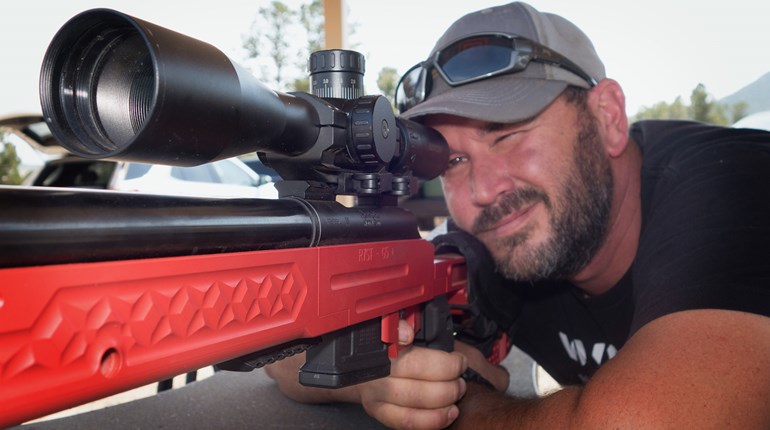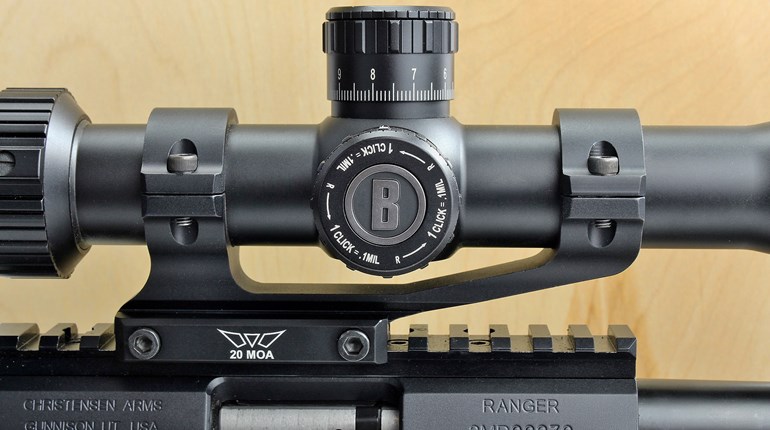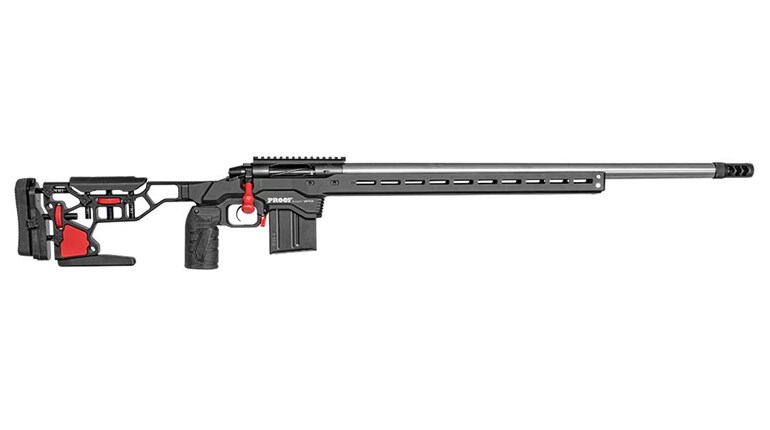
Forty-one years ago I watched a very old senior shooter (I was 29 at the time) get out of his car and slowly carry his shooting gear to the 1,000-yard line. I hoped he would be able to hit the target and wouldn't embarrass himself. I should not have worried.
I was lucky enough to be squadded with him for the day. At the end of the match he had won every stage and I had a new life's dream. I wanted to be like him at his age...to be able to win a 1,000-yard match against all comers. The gentleman was Lt. Col. Paul Wright of New Mexico. I hope I am living up to that dream. However, there is no reason you as a junior can't beat me or any other long-range shooter at 1,000 yards. To learn how to do it, read on.
For those who say, “Shoot at 1,000 yards? Heck, I can't even see that far,” I say, just open your eyes and try F-Class. Not only can you see the length of 10 football fields, but you can hit a 10-inch pie plate with amazing regularity.
F-Class (I'll call it F-C for short) is a unique international shooting sport that lends itself to young and old alike. It is a discipline you can enjoy the rest of your life. Many of the best FC shooters are in their seventies and eighties, and, just like Paul Wright, tough to beat!
The learning curve for F-C is rather short. A rank beginner can become a real contender in a very limited time. The muscle memory required for many other shooting disciplines is not as much of a factor in F-C, since you are not required to hold the rifle in position using your body structure.
You are allowed a front and rear support. The type of support allowed depends on the form of F-C you are shooting. There are two types. One is F-Open (FO) which allows most any caliber, plus a benchrest front tripod support and a rear bag. An FO rifle can weigh up to 10 kilograms (22 pounds), including a scope.
The second type of rifle is F Target Rifle (F/TR). These rifles can only be chambered for the .223 Remington or .308 Winchester case. In addition, they are allowed just a bipod and/or a sling for front support. They are further restricted to 8.25 kilograms (18.18 pounds) total weight, including the bipod and sling.
As you can see F-C is a different kettle of fish when compared to other high power (HP and NMC) rifle shooting games. You don't have to shoot standing, sitting or even prone with a sling. You don't have to use iron sights, although you could. Of course this makes F-C sound easy, but this is certainly not the case. It is just different! F-C is a special kind of challenge requiring the ability to read the minuscule changes in the atmosphere between the shooter and the target that can cause the loss of even one point. Doping the wind accurately and hitting a small area is the challenge-and it's challenge enough.
The targets have scoring rings that are half the diameter of the ones used in the prone HP. Now if you were paying attention during your geometry class (A = r2), you will know the area you are trying to hit is 25 percent smaller than that of the HP prone targets. The Long Range HP prone target has a 20-inch 10 ring and the FC LR target has a 10-inch 10 ring.
HP Target area = 3.14x 10x10 =1,256 sq inches.
FC Target area = 3.14x 5x5= 314 sq inches.
This is a tiny target, and even with the rifle supported it is hard to score a perfect 200 score, much less a 200-20x clean. The 10 rings are about 1 minute of angle (MOA) and the X-rings are ½ MOA. (The shortest description of MOA is that it equates to approximately 1 inch at 100 yards, 2 inches at 200 yards, 3 inches at 300 and so forth.)
Keep in mind a 1-MPH wind change can move a .155-grain .308 bullet traveling at 3,000 fps by 9 inches at 1,000 yards. Can you tell the difference between 4 and 5 mph winds? You'll need to.
F-C is shot at 300, 500, 600, 800, 900 and 1,000 yards. It is sometimes also shot at 1,200 yards. The three shorter distances are called mid-range; 800, 900 and 1,000 are the long-range distances. A single match may be at one or more of these distances. You will fire 10 to 20 record shots on each of your relays.
Now let's talk about an F-C match. What does it have to offer to a junior shooter? FC offers the opportunity to learn how to dope the wind at long range, using a rest and a high-power rifle scope. This should allow a junior to concentrate on understanding the wind's effect on the bullet and progress very quickly.
Since few juniors currently shoot F-C, the opportunities to become a National Junior Champion are extremely good. Mason Parker went to Sacramento, Calif., last March and became the 2010 F-Class National Junior Champion with a score of 1212-19x. If you'd like to try it, show up in Lodi, Wis., the end of September 2011-we'd love to see you there!
Did I mention the 2013 World F-Class Championships will be held at the NRA Whittington Center in Raton, N.M .August 23-27, 2013? Shooters from around the world will come to decide who will be the F-Open and F/TR World Champions. Eight- and four-man team championships will also be held. There will be four different team championships. How often will you be able to represent your country in a World Championship? This could be a once-in-a-lifetime chance.
A junior wanting to shoot F-C should first look at what rifles are available to him or her. If a .223 or .308 is available then F/TR is the class to go for. If some other caliber can be obtained then FO is the logical choice. Keep in mind you don't have to have high-dollar equipment to start. A regular plastic or cloth bag filled with sand will serve as a front rest. A sock filled with rice or sand can be used as a rear bag. The important thing is to get to the range and give it a try!
F-C is shot alongside most HP Prone rifle matches around the country. Just check the listing in the back of an online monthly Shooting Sports USA magazine (subscription is free; see www.nrapublications.org/ssusa), and ask if F-Class is shot in conjunction with prone rifle.
There are a number of major championship matches held around the country each year that include F-C. Among these are those held by the North State Shooting Club at Camp Butner in Creedmoor, N.C. A number of matches are also held in Sacramento, Calif., by the Folsom Shooting club at their range, the Sacramento Valley Shooting Center. The Bayou Rifle Club hosts matches at their range in Houston, Texas. The Fullbore Nationals (SoA) in Raton, N.M. also has an F-Class component. This year's match runs from September 11-17.
As I mentioned, the F-Class National Championships provide a good opportunity for a person to win a national championship. This year's championships will be hosted by the Winnequah Gun Club in Lodi, Wis., September 26-30.
A junior wanting to get involved in F-C should find the location of any NRA prone rifle shooting done in their locale. Then ask the match director if F-C is shot there. Once you locate a range, go on a reconnaissance mission and express your interest and ask questions of the shooters when they are not busy shooting. You may very well be offered a chance to fire a few rounds. Rifle shooters are always looking for new blood!
Take the time to check out F-Class, I can guarantee two things: You will enjoy F-Class and you will want to come back.







































